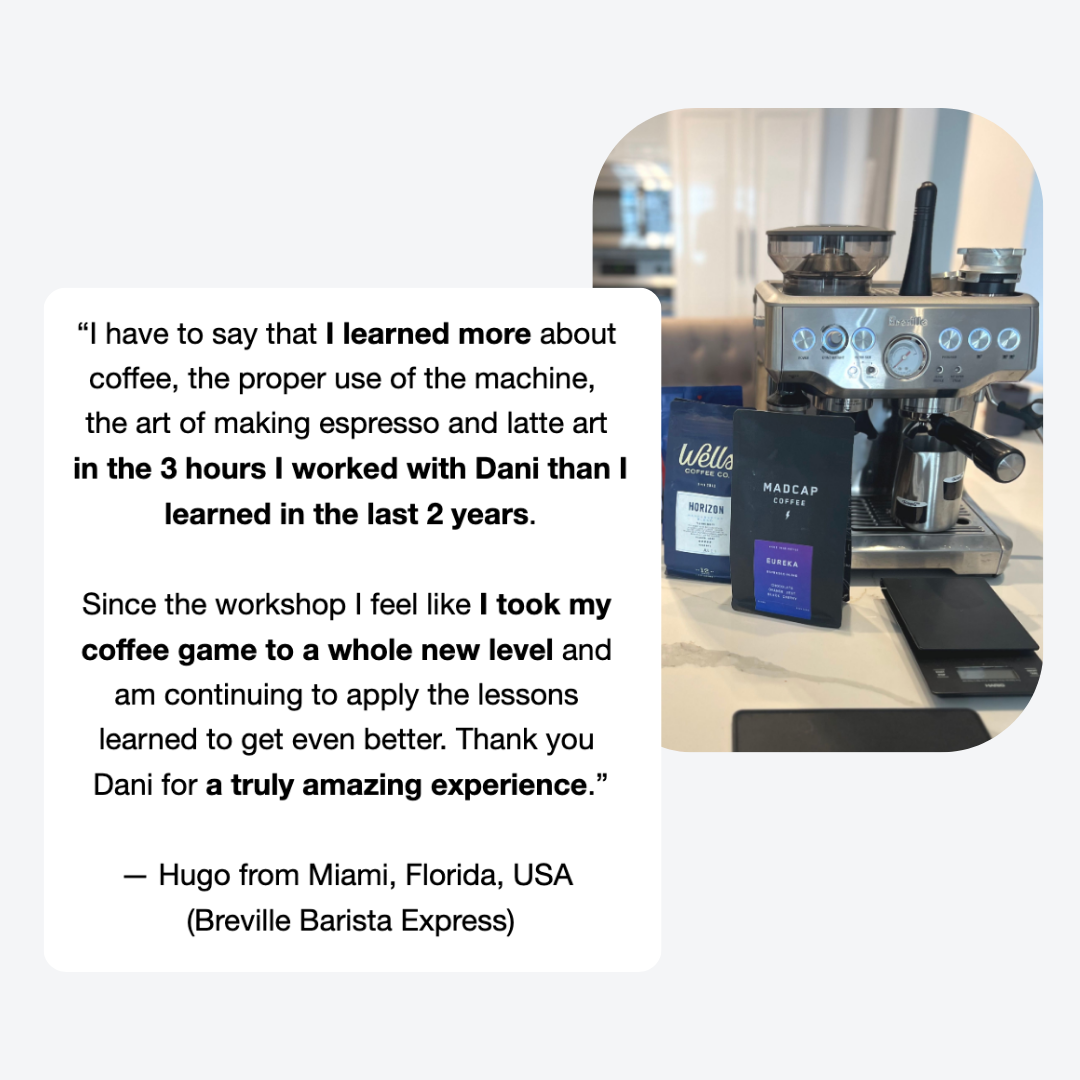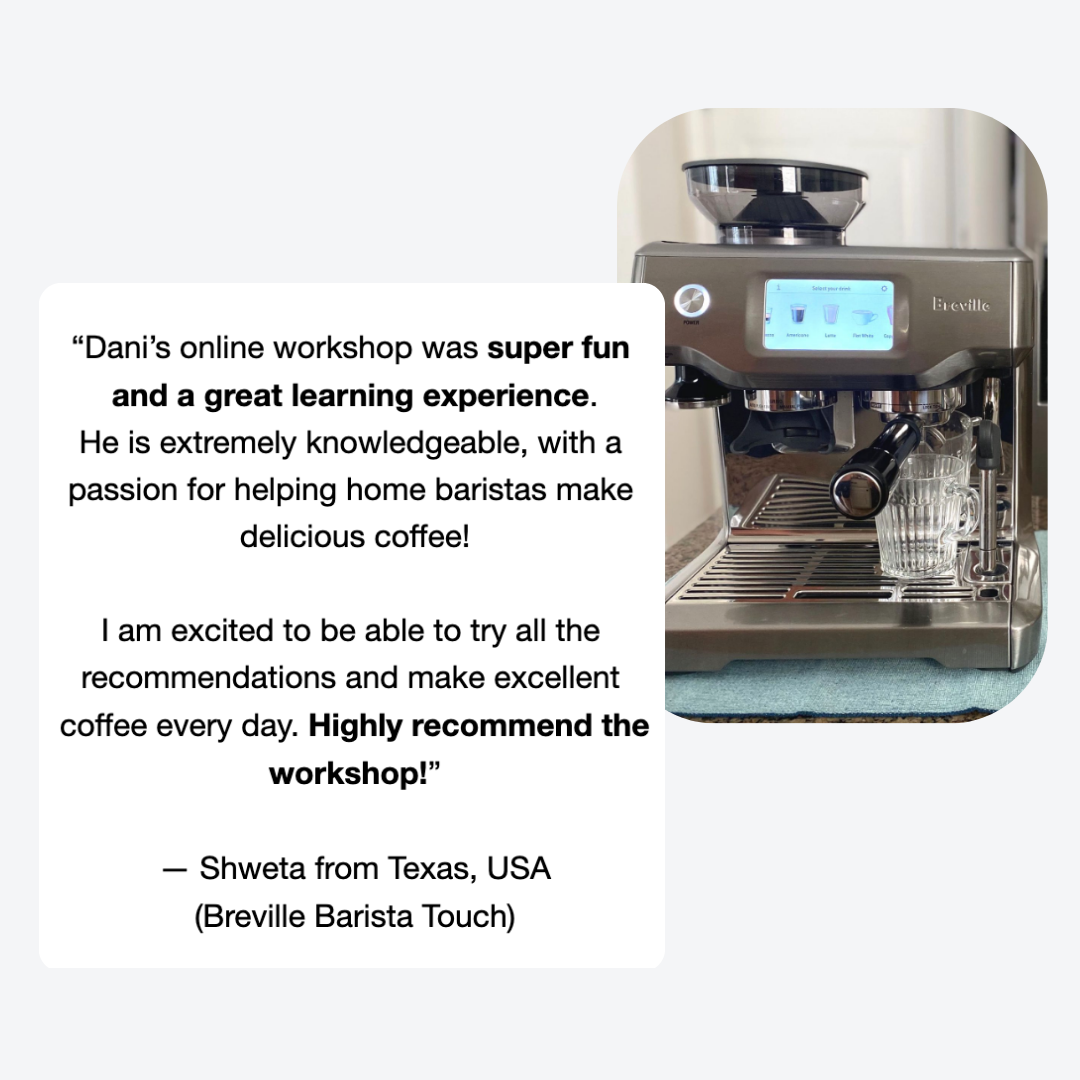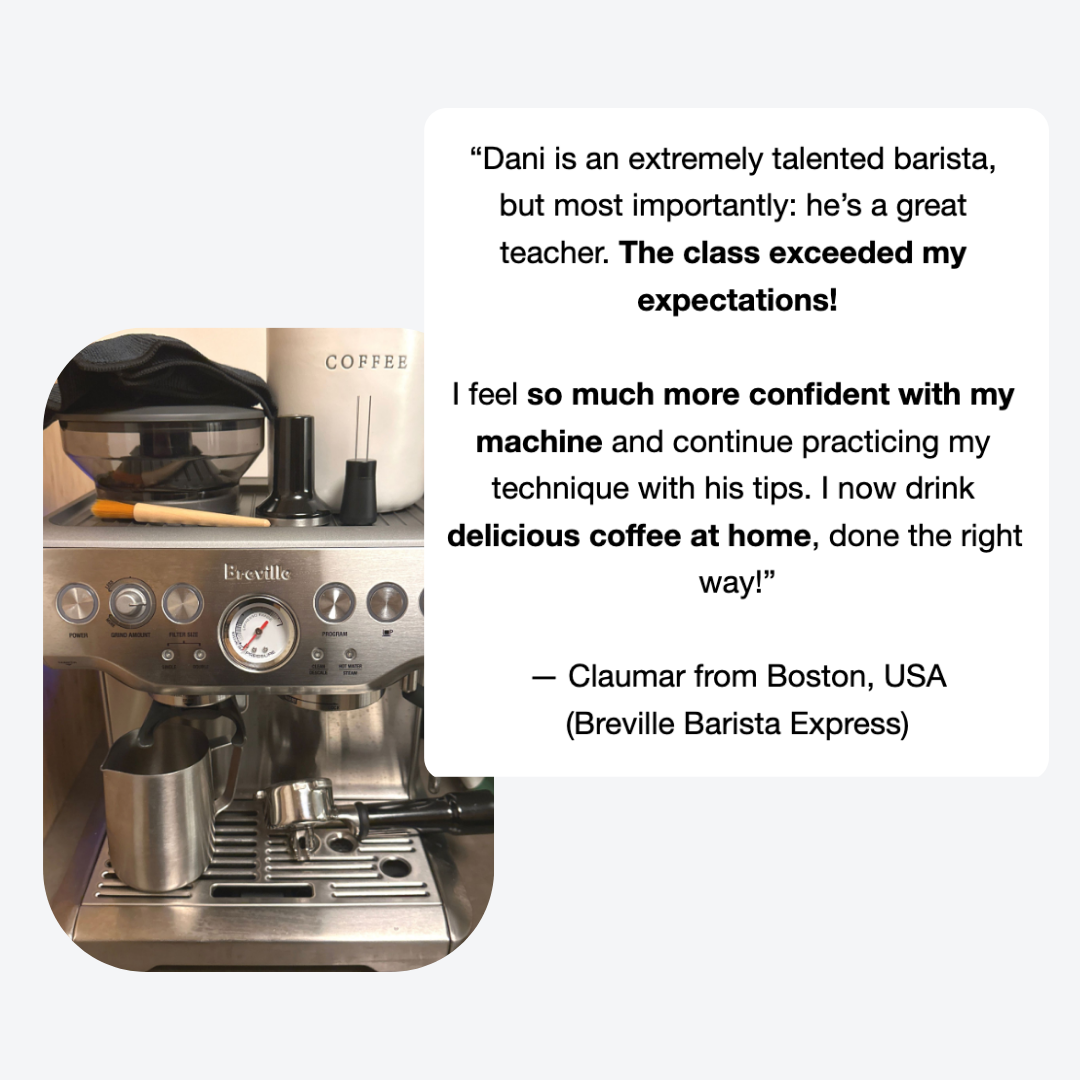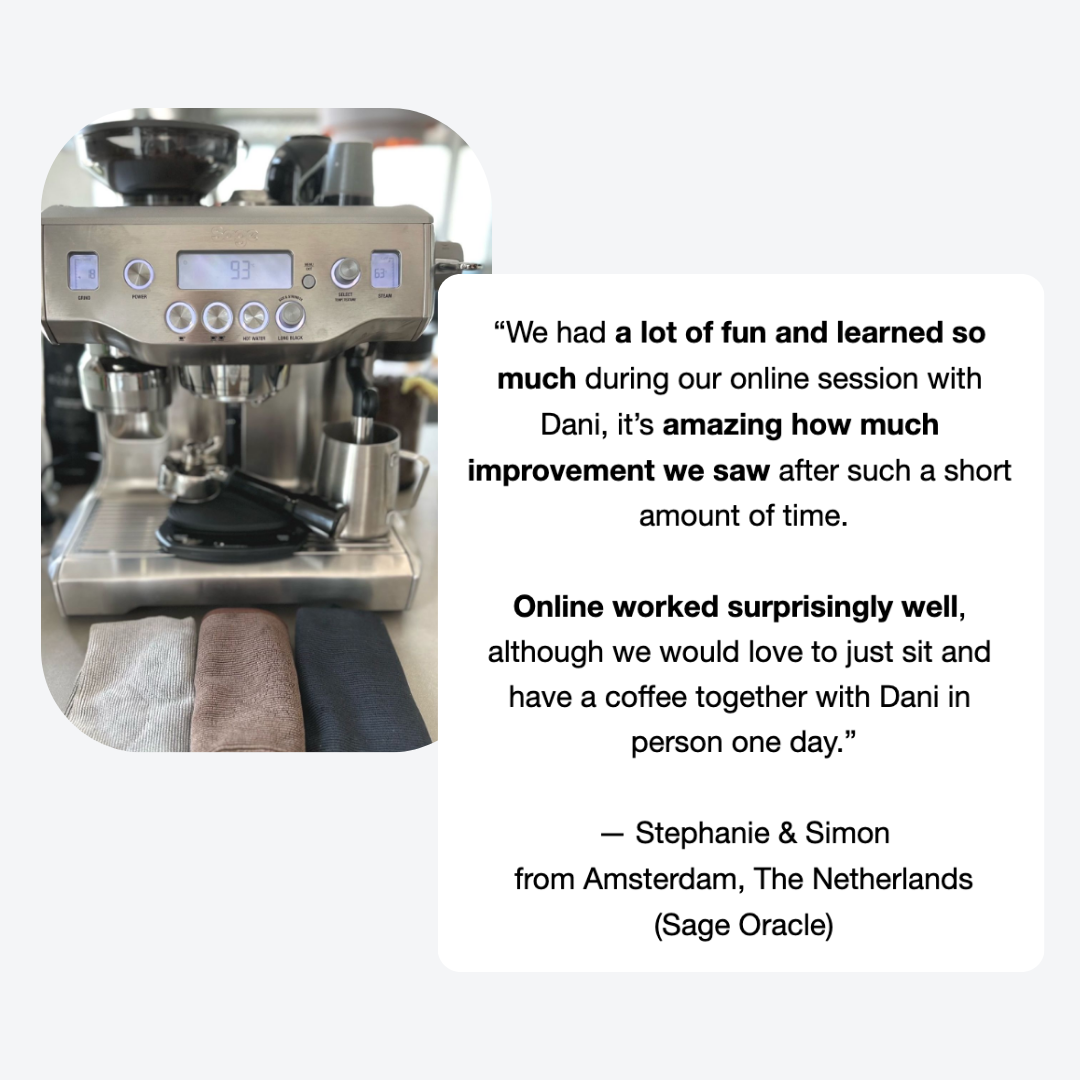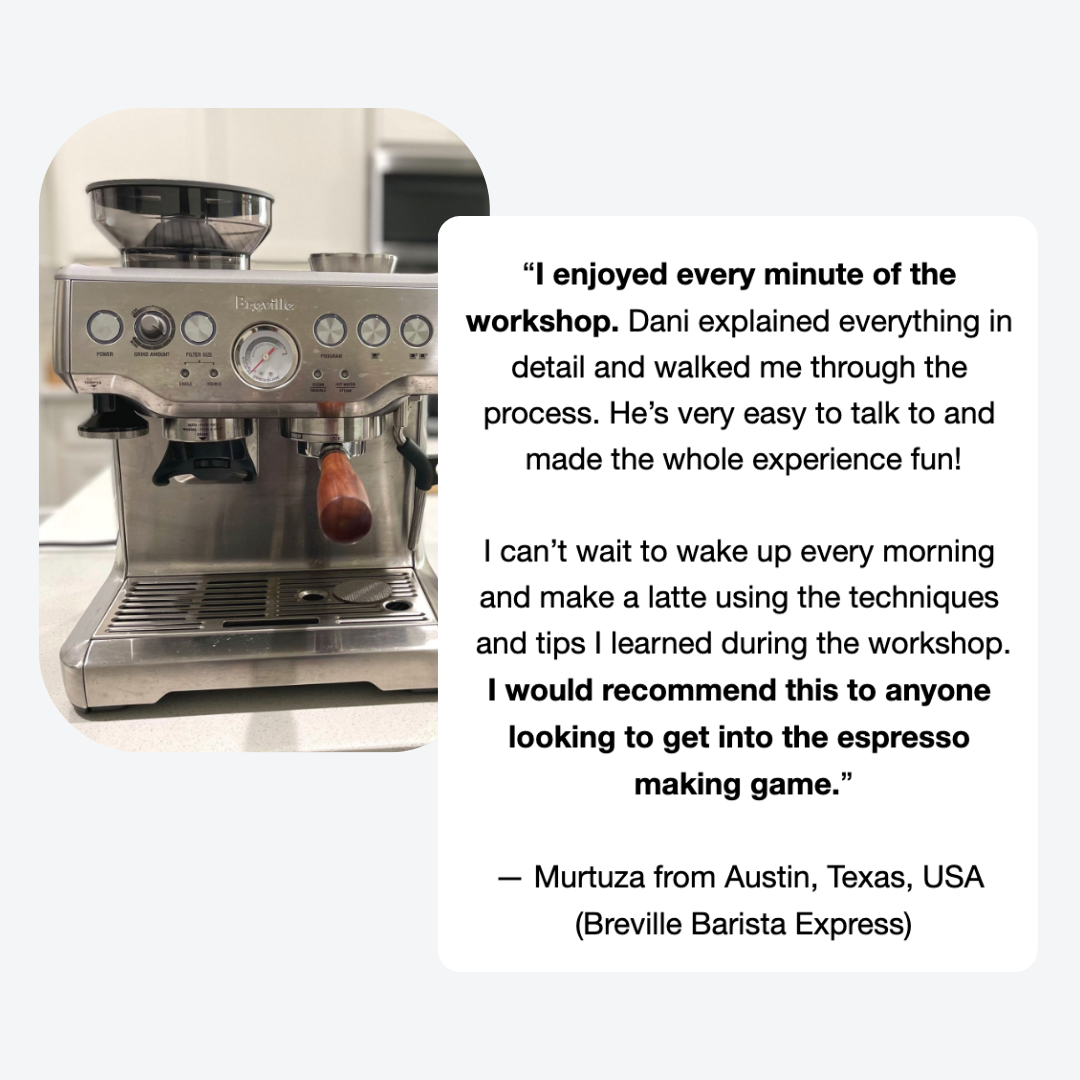Espresso channeling on Sage or Breville home espresso machines
Key tips for home baristas
Without a careful preparation of the coffee puck – also known as “puck prep” – even the smallest imperfections can lead to severe espresso channeling e.g. spraying, spurting, especially visible when using a naked portafilter.
Moreover, if you’re making espresso at home on a Sage or Breville machine, one thing you may not know is that oftentimes they exceed the standard 9 bars of pressure during the espresso extraction. That makes channeling even more likely than usual.
So, to help you address channeling, in the article below we’re looking at:
What exactly is espresso channeling?
How does channeling affect the taste of your espresso?
How can you tell that your espresso is channeling?
What causes espresso channeling and how can you prevent it?
What exactly is espresso channeling?
Channeling is a term used to describe unevenness during the espresso extraction, when most of the water travels through one specific area of the coffee puck. Water will look for the path of least resistance, and so it will find a narrow channel through the coffee grounds (water will flow faster through that channel and slower through the rest of the puck) instead of flowing and extracting the entire coffee bed evenly.
How does channeling affect the taste of your espresso?
Channeling can prove not only messy and frustrating, but also lead to an espresso that tastes far from ideal. Since some areas of the coffee will be more extracted than others, what we’ll ultimately get is a combination of under-extraction and over-extraction, resulting in an espresso that is unbalanced in clarity and flavors. The espresso shot can also taste weak, as well as acidic (sour) and bitter at the same time.
How can you tell that your espresso is channeling?
If you’re keen to learn more about espresso extraction and further improve your espresso making workflow (puck prep), I recommend using a naked or spoutless portafilter in the process. With one, by looking at the exposed basket during the espresso extraction, you’ll be able to see if water is flowing uniformly through the coffee bed or if there are issues you need to address.
Watching as the first drops of espresso extract through the exposed basket will give you a good indication if the water is flowing evenly through the coffee bed. In case you’re noticing the espresso starts to flow more from an area compared with the rest of the basket, that could be an issue.
As we progress, the steady stream of espresso should gradually cover all the metal surface of the basket. If you’re seeing gaps, where there’s no espresso coming through, this is a sign of unevenness and therefore espresso channeling. Some instances of channeling can cause thin streams or jets of water to shoot from the underside of the filter basket. These are all signs of channeling.
What causes espresso channeling and how can you prevent it?
The uneven distribution of the coffee grinds in the espresso basket is the main cause for espresso channeling. That being said, the better we distribute the coffee in the basket (i.e. the more evenly we distribute), the less chances to struggle with channeling.
Here are a few key tips I found to be helping home baristas prevent channeling. I’ve also included recommendations specific to any of you making coffee on a Sage or Breville home espresso machine.
Use freshly roasted coffee beans
Based on personal experience, as well as research, usually espresso shots flow faster through stale coffee beans. That ultimately contributes to channeling.
Consider using a WDT tool in your puck prep routine
The Weiss Distribution Technique (WDT) generally means using a needle, or a set of needles, to de-clump the coffee prior to tamping. The stirring action breaks up the clumps and evens out the density of coffee within the puck.
The built-in grinder of the Sage or Breville home espresso machines tends to produce excessive clumping (this happens naturally due to static and oils in coffee), especially when grinding at finer settings.
That being said, using a WDT tool to break those clumps and fluff up the coffee prior to tamping has proven not only to reduce espresso channeling, but also increase espresso extraction. On a side note, this tool also works very well as a way to evenly distribute the coffee grinds in the espresso basket.
Pay attention to coffee grinds distribution
Make sure to distribute the coffee grinds in the espresso basket evenly across the whole surface of the filter basket by using your fingers, palm tapping or a coffee distribution tool.
Work with a good tamper
The stock coffee tamper that typically comes out of the box with the Sage or Breville home espresso machines is very light, made of plastic, has a short handle and a rather poor fit with the espresso basket. That can lead to really suboptimal tamping, thus inconsistent espresso shots. Instead, I’d recommend an upgrade to a coffee tamper with a larger, more comfortable handle and a heavier stainless steel base. This is a small investment in your setup that can considerably improve your espresso at home.
And, if you ever wondered how hard you should tamp? Don’t overdo it. Here’s a good rule to keep in mind — press until the coffee is fully compressed and it stops moving down. What you want is to make sure the tamper is as level as possible. Remember what we said earlier, that water follows the path of least resistance? A crooked or tilted tamp will result in one part of the puck being more resistant to the flow of water, causing the water to flow easier through the thinner, less resistant side of the puck. Take your time, use the proper technique, maintain a level tamping and double check that the coffee bed looks level in the basket before pulling your espresso shot.
Incorporate pre-infusion in your espresso flow
Any dry pockets that remain in the coffee puck when brewing pressure kicks in, will resist the incoming flow of water, which in turn can lead to uneven extraction and instances of channeling. Applying pre-infusion will eliminate these dry pockets and lead to a more even espresso extraction, and ultimately a better tasting shot of espresso.
I hope you find these tips helpful and, if you’d like to dive deeper, you may consider our espresso and latte art home barista workshops. Happy brewing!



